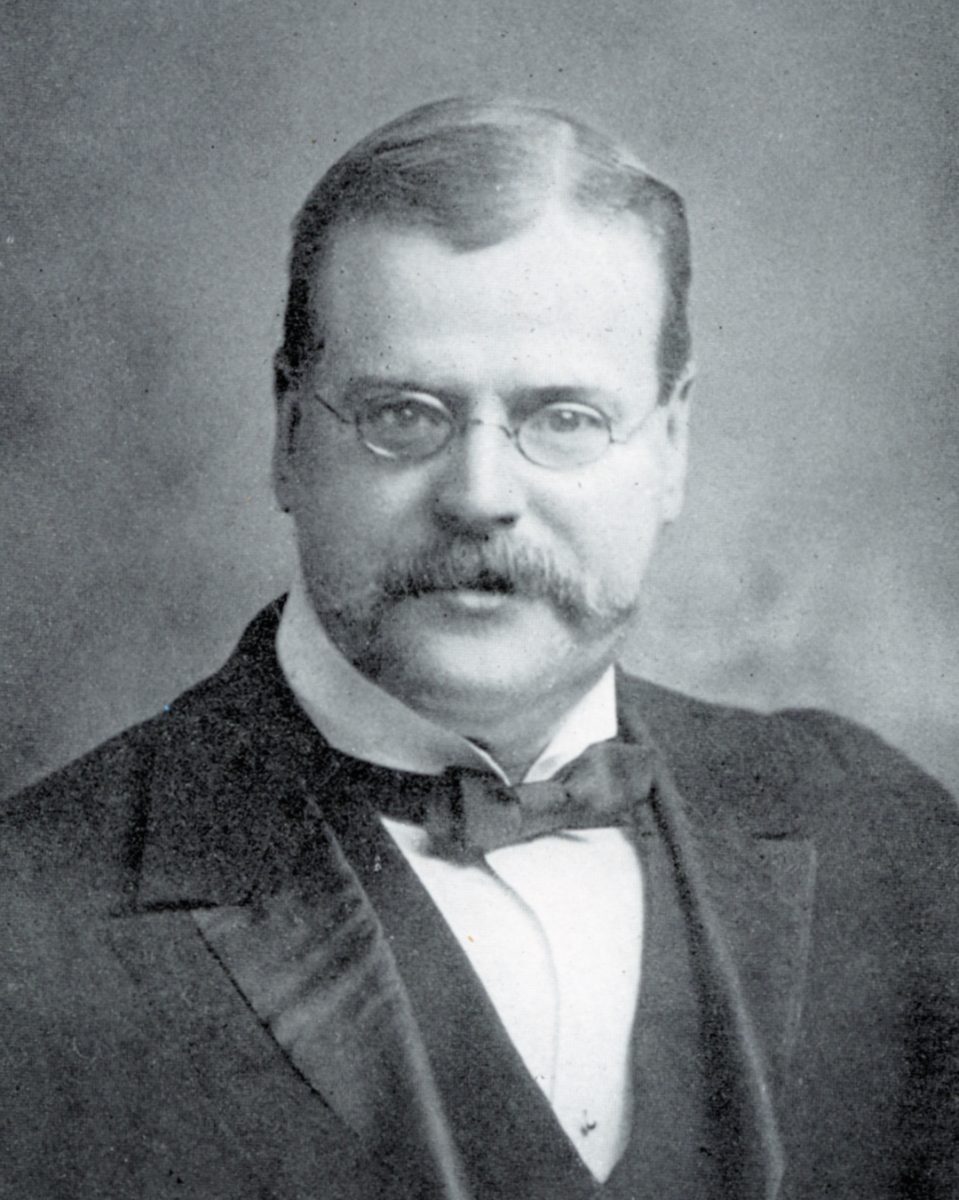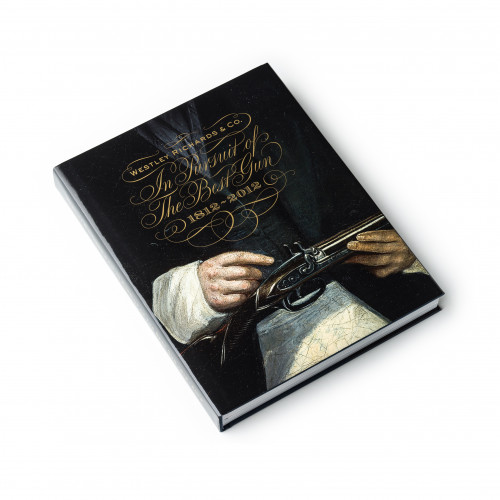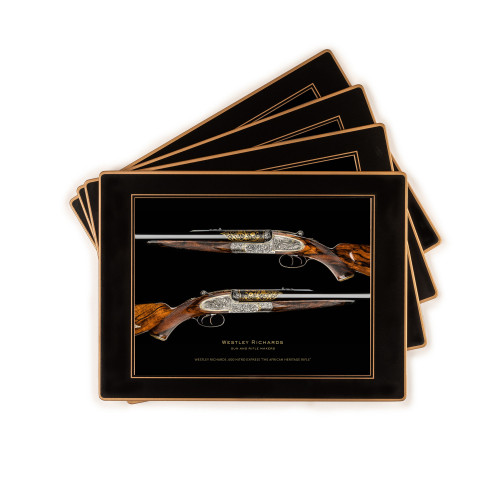Enthusiasm for shooting had expanded way beyond the traditional landed gentlemen and favoured tenants to men in the professions and in trade - and indeed those who served in the many and various colonial departments - and it was Mr Gale’s skill to entice them all to Westley Richards as clients, while still maintaining the connection with the traditional aristocratic elite.
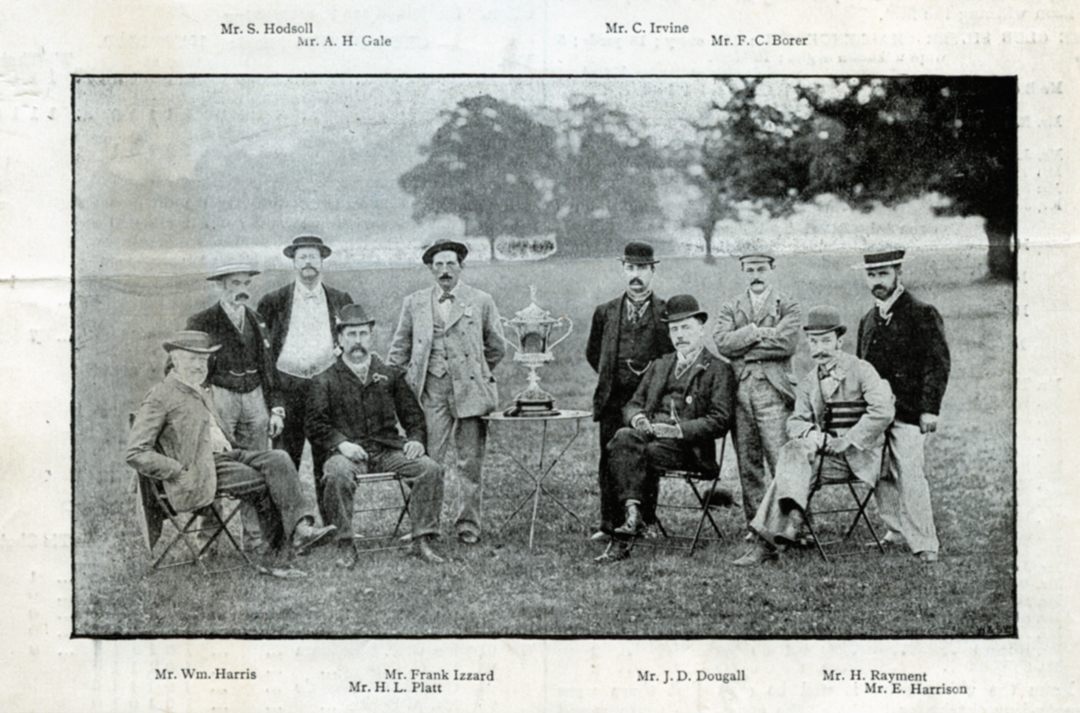 A.H.Gale (third from left) was the founder of the Middlesex Clay Bird Shooting Club
A.H.Gale (third from left) was the founder of the Middlesex Clay Bird Shooting Club
A man of some presence and authority himself, but perhaps less of an actor than ‘The Bishop’, Arthur Gale was chairman of the Willesden District Council and a Justice of the Peace (so there can have been no illegal prize fighting or cock fighting under his regime). He first joined the shop in 1874 and became a director of the company and manager from 1890. The ledger on the careers of his various staff at the shop, suggests a man of some toughness who dealt firmly with idlers and drinkers on his staff, dismissing men for insolence or for acts of real stupidity, such as smoking in the loading room. The ledger entries mostly record pay, holidays and minor infringements of duties. Notes were also entered on their health, and, during the First World War, their war service and their deaths.
 A.H.Gale’s signature and his trade card
A.H.Gale’s signature and his trade cardSome idea of the atmosphere of the shop in his time is given in Mr Teasdale-Buckell’s Experts on Shooting (1900) where the author, who knew the shop in the time of ‘The Bishop’, marvelled at the considerable changes to the interior, acknowledging the courtesy of Mr Gale and the importance of the telephone. Mr Taylor thought that Mr Gale’s special ability was to assess his individual clients’ needs and advise them accordingly, given the ever increasing range of guns available for the contemporary sportsman, and drawing on his own experience as a shooting man: “If the sportsman affects the truly British sport of Deer Stalking he has but to place himself unreservedly in the hands of Mr Gale or his deputies . . . and his requirements can at the instant be filled.” He continued: “whatever weapon is chosen by Mr Gale’s client will prove to be the most up-to-date in calibre, sighting equipment, balance and fit, and will shoot with comfort the best design of bullet for ensuring a kill after a patient and toilsome stalk.” Mr Taylor felt there were “no exigencies of sport anywhere throughout the world which can make an unanswerable demand upon the Bond Street Armoury”.
 Early twentieth-century view of the interior of the Westley Richards showroom at 178 New Bond Street
Early twentieth-century view of the interior of the Westley Richards showroom at 178 New Bond StreetIn 1895, Arthur Gale founded the Middlesex Clay Bird Shooting Club which allowed for shots to be trained without the traditional habit of releasing caged birds from a trap – a sign of increasing awareness of the public reputation of the sport. This he ran as honorary secretary for many years. The Mayfair showroom could also in these days call on the services of Westley Richards Shooting School and Practice Ground, at Welsh Harp, near Hendon, where clients could test and be fitted for their guns which they would had ordered through the New Bond Street (and the Conduit Street shop after 1917) – the shooting ground was only some 30 minutes away by train and “less by motor”. It was fitted with artificial grouse butts and partridge rises, and formed “a complete shoot in miniature”.
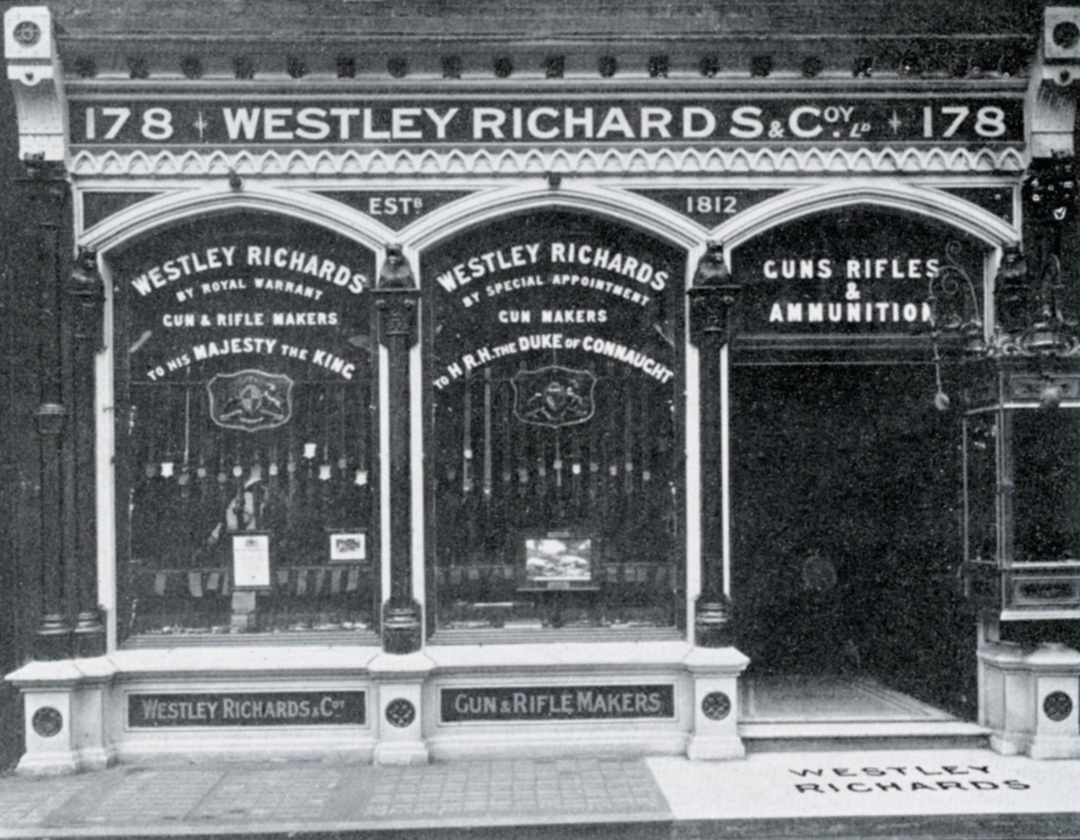 Early twentieth-century view of the exterior of the Westley Richards showroom at 178 New Bond Street
Early twentieth-century view of the exterior of the Westley Richards showroom at 178 New Bond StreetMr Gale also developed stylish illustrated catalogues of the firearms available - the centenary version of 1912 ran to 214 pages, and was fronted with the recently awarded royal warrant from King George V, himself an internationally famous sporting shot. The centenary catalogue is filled with extracts from letters of appreciation and from articles published in The Field and Country Life, among others. Reprinted in recent years, it is popular with collectors and shooting enthusiasts alike as a point of reference.5 He was succeeded as shop manager by Alfred Redfern.
The Explora Blog is the world’s premier online journal for field sports enthusiasts, outdoor adventurers, conservationists and admirers of bespoke gunmaking, fine leather goods and timeless safari clothes. Each month Westley Richards publishes up to 8 blog posts on a range of topics with an avid readership totalling 500,000+ page views per year.
Blog post topics include: Finished custom rifles and bespoke guns leaving the Westley Richards factory; examples of heritage firearms with unique designs and celebrated owners like James Sutherland and Frederick Courtenay Selous; the latest from the company pre-owned guns and rifles collection; interviews with the makers from the gun and leather factory; new season safari wear and country clothing; recent additions to our luxury travel bags and sporting leather goodsrange; time well spent out in the field; latest news in the sporting world; and key international conservation stories.












